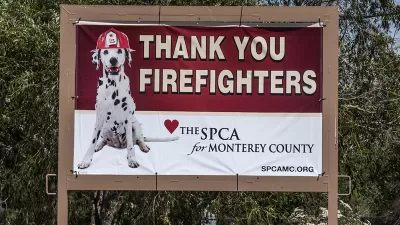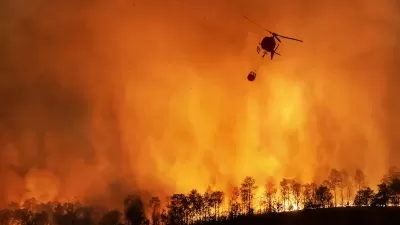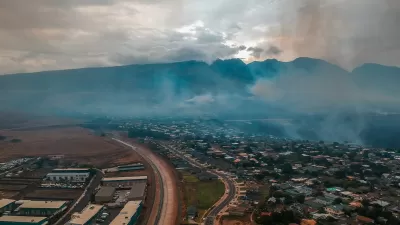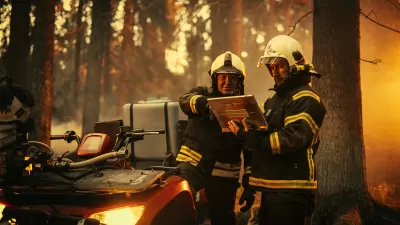As wildfires become bigger, more frequent, and more expensive to fight, new methods for preventing the worst impacts of fire will be necessary, according to a new study.

Bob Berwyn shares news of a new study published in the Proceedings of the National Academy of Sciences that suggests new methods for fighting and preventing wildfires will be necessary in a future defined by climate change.
Based on research in Colorado and California, "the Forest Service and other agencies simply won’t be able to keep up with bigger and longer-lasting fires unless they adopt a new, forward-looking attitude and different strategies to prepare for wildfires in the era of global warming," explains Berwyn.
Specifically, "instead of trying to fight every fire or thin vast areas in futile prevention efforts, the Forest Service should focus on protecting communities and limiting new development in fire-prone areas, while letting some fires — even large — burn, which will help Western landscapes adapt to climate change in the decades ahead."
Berwyn provides more detail on the study, by researchers at the Institute for Alpine and Arctic Research at the University of Colorado-Boulder, while referencing examples of unsustainable practices currently used to battle and prevent wildfires.
The findings connecting land use regulations to wildfire prevention, by restricting development and sprawl, echo a 2016 report from the Open Spaces Initiative at the University of Wyoming.
FULL STORY: The Future of Fighting Wildfires in the Era of Climate Change

Planetizen Federal Action Tracker
A weekly monitor of how Trump’s orders and actions are impacting planners and planning in America.

Congressman Proposes Bill to Rename DC Metro “Trump Train”
The Make Autorail Great Again Act would withhold federal funding to the system until the Washington Metropolitan Area Transit Authority (WMATA), rebrands as the Washington Metropolitan Authority for Greater Access (WMAGA).

The Simple Legislative Tool Transforming Vacant Downtowns
In California, Michigan and Georgia, an easy win is bringing dollars — and delight — back to city centers.

The States Losing Rural Delivery Rooms at an Alarming Pace
In some states, as few as 9% of rural hospitals still deliver babies. As a result, rising pre-term births, no adequate pre-term care and "harrowing" close calls are a growing reality.

The Small South Asian Republic Going all in on EVs
Thanks to one simple policy change less than five years ago, 65% of new cars in this Himalayan country are now electric.

DC Backpedals on Bike Lane Protection, Swaps Barriers for Paint
Citing aesthetic concerns, the city is removing the concrete barriers and flexposts that once separated Arizona Avenue cyclists from motor vehicles.
Urban Design for Planners 1: Software Tools
This six-course series explores essential urban design concepts using open source software and equips planners with the tools they need to participate fully in the urban design process.
Planning for Universal Design
Learn the tools for implementing Universal Design in planning regulations.
Smith Gee Studio
City of Charlotte
City of Camden Redevelopment Agency
City of Astoria
Transportation Research & Education Center (TREC) at Portland State University
US High Speed Rail Association
City of Camden Redevelopment Agency
Municipality of Princeton (NJ)





























